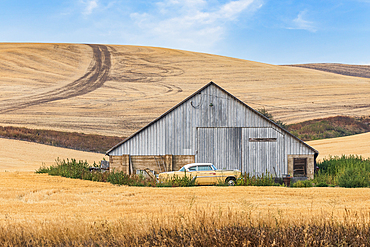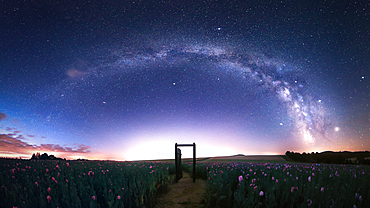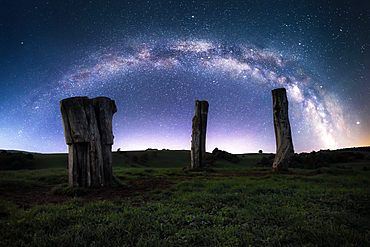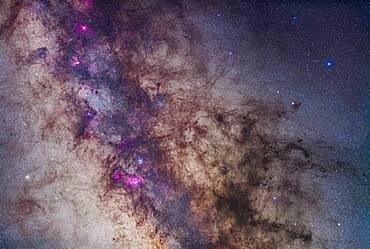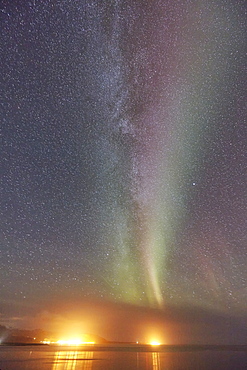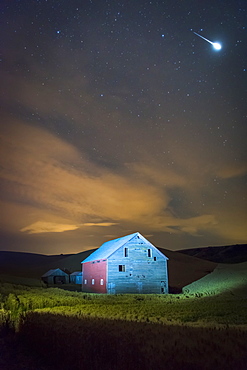Recent searches
Loading...
1366-843 - USA, Washington State, Whitman County. Palouse. September 6, 2021. 1954 Pontiac Star Chief by an old barn.
1336-562 - Milky way above a lavender field and two small trees on the Plateau de Valensole, Provence, France, Europe
1113-107790 - The Milky Way over Autobahn bridge near Schwarza, Rohr, Thuringia, Germany
1113-107800 - The poppy fields near Germerode, Hesse, Germany
1113-107793 - The Milky Way over Thuringia, Marksuhl, Germany
1113-107788 - Milky Way over Chapel near Hofaschenbach, Hesse, Rhoen, Germany
1112-6727 - The Milky Way over termite mounds in Cape Range National Park, Exmouth, Western Australia, Australia, Pacific
1112-6729 - The Milky Way over termite mounds in Cape Range National Park, Exmouth, Western Australia, Australia, Pacific
1112-6728 - The Milky Way over termite mounds in Cape Range National Park, Exmouth, Western Australia, Australia, Pacific
1112-6730 - The Milky Way over termite mounds in Cape Range National Park, Exmouth, Western Australia, Australia, Pacific
1336-420 - Milky way above a group of cypresses, Val d'Orcia, Tuscany, Italy, Europe
1179-5195 - Milky Way in the night sky over tree trunks of Fanal forest, Madeira island, Portugal, Atlantic, Europe
1350-54 - The Hyades star cluster with the red giant star Aldebaran (looking yellow here) in Taurus the bull in the winter sky. The field is similar to what a pair of large binoculars would show. I shot this from home Nov. 25, 2019.
1350-89 - The Horsehead Nebula, B33, below the Belt of Orion and the star Alnitak, along with the bright Flame Nebula, NGC 2024, to the left of Alnitak. Many other bright reflection nebulas populate the field, such as NGC 2023 just left of the Horsehead itself. The quintuple star system Sigma Orionis is right of the Horsehead. The dark Horsehead is set against the bright streak of the emission nebula IC 434.
1350-140 - The large star-forming region of IC 1396 in Cepheus, taken September 5, 2018 from home in southern Alberta. The wide field includes the bright orange star Mu Cephei, or Herschel's Garnet Star, at top. The Elephant Trunk Nebula is at centre. North is at top.
1350-135 - The colourful region around Antares in Scorpius, the yellow star at centre. To the right is the globular cluster Messier 4. Above right of Antares is the smaller globular NGC 6144. Above are the nebulas associated with Rho Ophiuchi. The area is filled with reflection (yellow and blue) and emission nebulas (red and pink). The field simulates a binocular field.
1350-35 - A mosaic of the region around the Small Sagittarius Starcloud and Dark Horse dark nebula complex. The field takes in the Milky Way from the Lagoon Nebula at bottom to the Eagle Nebula at top left. In between from top to bottom are the Swan Nebula (M17), and the Small Sagittarius Starcloud (M24). Flanking the bright M24 starcloud are the large open clusters M23 (right) and M25 (left). At bottom left is the M22 globular star cluster. The prominent dark nebula at right is the large Pipe Nebula (B78) with the small Snake Nebula (B72) above it. The whole complex is visible to the naked eye as the Dark Horse.
1350-79 - The Belt and Sword region of Orion, with the Orion Nebula, Messiesr 42 and 43, at bottom. Below the left star of the Belt, Alnitak, is the famous Horsehead Nebula, while above it is NGC 2024, aka the Flame Nebula. At very top left is Messier 78, while part of Barnard's Loop arc across the field at left. The field is filled with other faint red emission and blue reflection nebulas. The large loose open cluster Collinder 70 surrounds the middle star of the Belt, Alnilam.
1350-47 - This is the Belt of Orion with its three blue stars across the top of the frame (L to R: Alnitak, Alnilam, and Mintaka), with the iconic Horsehead Nebula (aka B33) below Alnitak, with the dark Horsehead set against the bright nebula IC 434, aka Orion's Dagger. The pinkish nebula above Alnitak is NGC 2024, the Flame Nebula. The small blue reflection nebula left of the Horsehead is NGC 2023, with smaller IC 435 to the left of it. The field is filled with the large open cluster Collinder 70. The multiple star at bottom left of centre is Sigma Orionis. Many other smaller bits of reflection nebulas populate the field in and around the Belt.
1350-123 - NGC 7000, the North America Nebula, with the Pelican Nebula, IC 5067, at right, in Cygnus, taken from home November 21, 2016 as part of testing of the Explore Scientific FCD100 102mm apo refractor. This is a stack of 5 x 6-minute exposures at f/7 with the ES field flattener, and at ISO 1600 with the filter-modified Canon 5D MkII. Star diffraction spikes added with AstronomyTools actions.
1350-16 - Comet Holmes, 17P, taken Nov 1, 2007 on excellent night. Taken with A&M 105mm apo refractor at f/5 with Borg 0.85x compressor/field flattener on SkyWatcher HEQ5 mount. Canon 20Da camera at ISO400. Composite of 4 min, 2min, 1min, 30sec, 15sec, and 7 sec exposures, each exposure being a stack of 3 to 4 identical exposures. Registered and stacked in Photoshop (HDR mode did not produce usable result, so manually composited with sucessively smaller masks to reveal short exposure content around nucleus. Contrast exaggerated with Curves to bring out very faint tail structure. North up, so tail to the S and SW.Nucleus is dot at upper left of inner coma, other star in inner coma at right is a field star
1350-159 - Circumpolar star trails over a grand old barn in southern Alberta, on a fine spring night, May 23, 2018. Illumination is from the waxing gibbous Moon to the south. This is looking north to Polaris at top right. A thunderstorm is on the northern horizon with a lightning bolt as a bonus.
1336-289 - Milky Way above a sunflowers field with a bent tree silhouette, Emilia Romagna, Italy, Europe
1184-5028 - Aerial of the star shaped Citadel of Alessandria, Alessandria, Piedmont, Italy, Europe
1179-4768 - Snowy landscape lit by moon in the starry sky during the Northern Lights (Aurora Borealis), Skarsvag, Nordkapp, Troms og Finnmark, Norway, Scandinavia, Europe
1179-4770 - Frozen snow lit by green lights of the Northern Lights (Aurora Borealis) in the cold Arctic night, Mageroya island, Nordkapp, Troms og Finnmark, Norway, Scandinavia, Europe
1179-4769 - Surreal shapes of the Northern Lights (Aurora Borealis) in the Arctic night, Skarsvag, Nordkapp, Troms og Finnmark, Norway, Scandinavia, Europe
1179-4749 - Northern Lights (Aurora Borealis) over North Cape cliff in winter, Mageroya island, Barents Sea, Troms og Finnmark, Northern Norway, Scandinavia, Europe
1264-303 - Plateau Piani di Ragnolo by night, Sibillini mountain range, Apennines, Umbria, Italy, Europe
1202-404 - The Aurora Borealis (Northern Lights) seen over Olafsvik and Rif, on the right, Snaefellsnes peninsula, western Iceland, Polar Regions
1202-401 - The Aurora Borealis (Northern Lights) seen in the night sky above Grundarfjordur, the Snaefellsnes peninsula, west Iceland, Polar Regions
1179-4713 - Northern Lights (Aurora Borealis) in the starry winter sky over the frozen forest, Pallas-Yllastunturi National Park, Muonio, Lapland, Finland, Europe
1179-4714 - Winter forest covered with snow under the green Northern Lights (Aurora Borealis), Pallas-Yllastunturi National Park, Muonio, Lapland, Finland, Europe
1323-1 - Startrail with windmill in foreground, Timbavati, South Africa, Africa
1306-605 - Star trails in the Sahara Desert, Morocco, North Africa, Africa
1306-601 - Star trails above The Kasbah Ait-Benhaddou, UNESCO World Heritage Site, Morocco, North Africa, Africa
1306-603 - Star trails above The Kasbah Ait-Ben Haddou, UNESCO World Heritage Site, Morocco, North Africa, Africa
1306-607 - Star trails above the Sahara Desert, Morocco, North Africa, Africa
1116-46565 - Stars And Constellations Above A Farmhouse And Barn In A Wheat Field At Night, Palouse, Washington, United States Of America
1116-46564 - Stars Glowing In The Sky At Dusk Over A Farmhouse, Palouse, Washington, United States Of America
1116-45152 - Night Sky With Aurora Borealis, Thunder Bay, Ontario, Canada
1116-45438 - Bands Of Northern Lights In The Dark Manitoba Skies Near Churchill, Manitoba, Canada
1199-457 - Game-shooters on a blue sky day with sun star, Norfolk, England, United Kingdom, Europe
1116-39487 - Red barn and windmill at a farm, near Edgewood, Iowa, United States of America
1116-39486 - Red barn and windmill at a farm, near Edgewood, Iowa, United States of America
1116-39485 - Red barn at a farm, near Edgewood, Iowa, United States of America
1116-39484 - Red barn at a farm, near Edgewood, Iowa, United States of America
1178-11364 - Boy (6-7) playing with star with American flag pattern
1178-5448 - Boy (6-7) playing with star with American flag pattern
848-480 - The Northern Lights (Aurora Borealis), Vik, Iceland, Polar Regions
1113-28485 - Flame Tree, Flamboyant, Royal Poinciana, sugar cane fields, 2 local people on bicycle, Mauritius, Africa
1116-7487 - Hawaii, United States Of America; Halema'uma'u Vent Inside Kilauea Crater Glows From Molten Lava At Night With Star Field In The Sky
756-222 - Star trails, Kimberley, Western Australia, Australia, Pacific
You reached the end of search results
